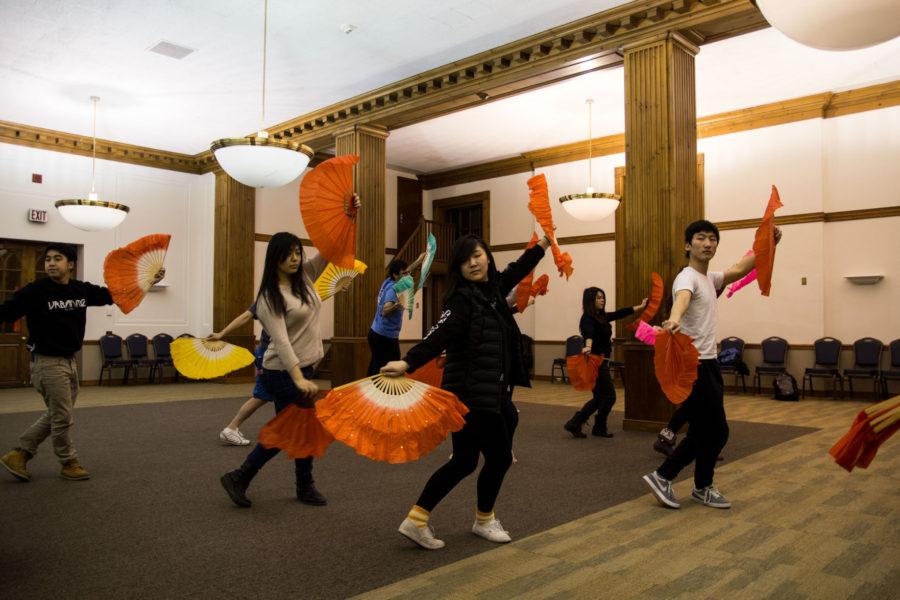Triple A Fashion Show: Going beyond the performance
Sam Fu (right) leads Chinese fan choreography during practice for the Asian American Association’s 29th annual fashion show. The show will be at Foellinger Auditorium on Saturday.
March 5, 2015
Now in its 29th year, the Asian American Association’s Fashion Show has evolved to a place for more than just dance and musical performances, but also a place for discussion.
After nearly five years in the Asian American Association (AAA), Neil Sarwal, fifth-year senior in Engineering, and Hiep Du, 2014 University alumnus, have taken over as head coordinators for this year’s AAA Fashion Show and hope to provide a platform for a variety of beliefs.
This year’s show takes on the theme of “Not just an Asian Affair.” For both Sarwal and Du, even though the name carries a great deal of connotations in the U.S., the show is a culturally based performance.
“(Our) fashion show isn’t a traditional ‘fashion show’ with a runway and people wearing different costumes,” Du said. “It’s actually a cultural showcase that’s mainly dancing performances, and costumes are sort of a secondary thing. But the main idea of Fashion Show is to showcase Triple A members who have taken the time to step out of their comfort zone, learn something new and also to try and teach something to the audience about the Asian American identity.”
The show, which begins at 3 p.m. Saturday at Foellinger Auditorium, consists of five “scenes,” including cultural, formal, Broadway, modern and nightlife, according to Du.
Get The Daily Illini in your inbox!
Johnny Ngo, junior in Media and a former Illini Media employee, is the coordinator for the cultural scene for the show. Ngo said one of the ideals behind the show is to demonstrate to the public some of the issues that not just Asian Americans face, but many other races face in today’s society.
“Our goal is to address issues that are easily overlooked and forgotten about, things that people generally have a vague idea exists, but don’t do anything about or acknowledge,” Ngo said.
While each scene has its own unique dance style and story, Sarwal said the organizers hope to provide ideas that can speak to people across genders and races — even while honoring their own culture.
“We wanted to make a show that wasn’t necessarily catered to the Asian American experience, but more so the American social experience,” Sarwal said. “With culture, we can allow kind of a two-way communication. We kind of create the theme so we can bring people in but we create culture so we can also project ourselves out. And that’s what allows communication both ways, and I think it’s very important because otherwise, we’re alienating our own organization.”
For Ngo, the performance is an opportunity to allow others to understand the issue of “what it’s like to be a perpetual foreigner” and to be not thought of as American, but just Asian. Ngo said he, along with many others, have dealt with acceptance problems as an Asian American — citing he has encountered people who are hesitant in believing he is from the U.S.
“… These things are present in Asian American society, but these also happen in American society as a whole, no matter where you’re from,” Ngo said. “You can be Hispanic, you can be African American, or you can speak a little differently and people might assume that. Or maybe you were born here and you just look a little different, but they still assume that you’re not American.”
But through the dance and event, Sarwal said the fashion show provides not just the organization, but also a community — filled with different traditions, beliefs and values — with an opportunity to bond as a collective.
“We strive to include everybody, we strive to include all these different styles of dance, all these different experiences and atmospheres,” Sarwal said. “We strive to include different types of people with different backgrounds into the show, and you know, we just want to include everybody in the process and the meaning and the message in order for Fashion Show to reach as many people as possible.”







